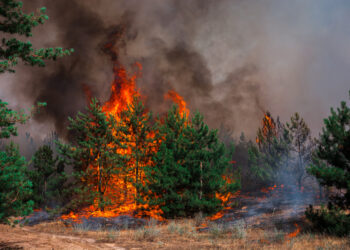By Seaborn Larson MONTANA STATE NEWS BUREAU
HELENA – Montana’s recreational cannabis sales through the first quarter of the market’s first year are outpacing projections and it’s not even tourism season yet.
Montana providers have sold $72.9 million in cannabis products, including both medical and recreational, since the start of 2022, according to figures released April 6 by the Montana Department of Revenue. Recreational cannabis had its biggest month yet in March with nearly $15.9 million in sales. Medical sales came in at $9.8 million.
To date, recreational cannabis sales have totaled more than $43.5 million, setting Montana on track to reach $174 million by the of the year. But efforts to push recreational cannabis sales out of Montana’s largest county may hamper that trajectory, and a perennial cannabis opposition group says it’s launching a county-by-county campaign to ban recreational marijuana business where the margins on the 2020 legalization vote were slim.
Last year the state budget office projected Montana would see $130 million in recreational sales in 2022. That number was adjusted down from earlier projections made by economists which expected Montana might see more than $200 million in sales. State fiscal analysts had drawn the numbers down due to lawmakers enacting more extensive regulations than what was in the ballot initiative prior to the state’s legalization vote in 2020.
“This isn’t people growing weed in their shed anymore, this is big business,” J.D. “Pepper” Petersen, president and CEO of the Montana Cannabis Guild, told the Montana State News Bureau. Petersen was one of the architects of Montana’s legalization ballot initiative in 2020 and continues to closely monitor the industry’s rise. Along with running a trade group, he also owns the Cannabis Corner in Helena.
“We have a tremendous number of out-of-state customers coming into the dispensaries, and that number is just going to grow and grow,” he said.
The earlier forecast from the Bureau of Business and Economic Research predicted out-of-state customers would be the largest driver of growth in sales, from about $30 million in 2022 to $84 million in 2026. By that time, the BBER projected Montana could see more than a quarter billion in sales annually for recreational cannabis alone. With the baseline 20 percent tax on recreational sales (medical sales are taxed at 4 percent), Montana’s tax revenues could be more than $50 million each year.
Kate Cholewa, government affairs representative for another trade group called the Montana Cannabis Association, said that summer bump from tourist sales likely won’t benefit Montana providers equally, but regionally, like the areas around Glacier and Yellowstone that have developed around the tourist seasons.
As for how providers are faring in the first months of the recreational market, Cholewa said MTCIA’s members are holding steady with inventory.
“People are doing well,” she said. “I think mostly the challenges have to do with incoming rules, changing testing requirements, more so than keeping pace with the market.”
Local jurisdictions can also add a 3 percent tax on both recreational and medical sales to draw some of the tax revenues into local coffers. Park, Missoula, Dawson and Yellowstone counties have each elected to do so, although Yellowstone County, where cannabis opposition has deep roots, will vote in June on the question of banning cannabis sales within the county.
SafeMontana, the anti-marijuana group headed up by Billings car dealer Steve Zabawa, has already raised more than $14,000 to support Yellowstone County opting out of recreational cannabis sales, $13,500 of which is Zabawa’s own cash.
State campaign finance records show the group has also set up another committee for a similar effort in Granite County, population 3,300 in western Montana.
Zabawa said Wednesday he believes the support to legalize cannabis in the 2020 election was inflated by promises in the ballot initiative to allocate tax revenues toward easements, parks and trails. That allocation became a contentious political football when lawmakers were developing their own legalization framework in 2020. The final version of the legislation included $5.4 million for public lands easements, less than half the amount promised in the initiative.
But Zabawa also believes Montanans, particularly those in conservative-leaning counties where legalization did not pass by a wide margin, will have changed their minds on marijuana now that dispensaries are cropping up across the state. With political committees to support opt-out efforts already established in Yellowstone and Granite counties, Zabawa is placing his next bet on Flathead County, with an eye on Ravalli County next.
“I’m making the bet that there’s less people that want recreational now that the reality is coming dead in their face,” Zabawa said in a phone interview.
Montanans also passed a constitutional ballot initiative in 2020 that legalized marijuana use and possession statewide, but 27 counties currently have a ban on recreational cannabis sales. Only one county, Dawson, has so far used the opt-in/opt-out provisions passed by the Legislature to flip the county from “red” to “green.”
Yellowstone County has seen the highest sales figures each month for combined cannabis and medical sales. In March alone the county accounted for $4.5 million of the $25.7 million total in statewide sales, about 18 percent.
“I’m thinking about how Yellowstone County is out of its collective mind” for considering a ban on recreational sales, Petersen said. “Look at this revenue that they’re choosing to ignore and it makes no sense.”
The figures released by the state revenue department also show Montana is nearing the $10 million mark in tax revenue from recreational and medical marijuana sales. The legislature’s final framework allocated the first $6 million toward the HEART fund proposed by Gov. Greg Gianforte, a new substance use disorder treatment and addiction recovery program. The Montana Department of Public Health and Human Services said those funds should be touching down at the community level soon.
“DPHHS continues to work on various pieces of the HEART Initiative, and we’re excited to begin the distribution of these funds into the community, as well as increasing services to low-income Montanans in need of substance abuse and mental health treatment,” said Jon Ebelt, a spokesperson for DPHHS.













